myHIN Blog

April 20, 2013
Mass Media, Sex, and the HIV Chat
By the time I was 16, I was already aware of what condoms were, how they were used and who used them. As a 20 -year-old graduating college senior, I look back on all I know about HIV. In order to address the discussion of HIV among teens, we must also talk about the sex discussion first because they are related. For one thing, I know that my parents had little to do with the discussion about sexually transmitted diseases. A curious kid at 16, I was also an avid ‘TV-watcher”. Like most of my African-American peers, we always discussed how tv shows like Flavor-of-Love, the Real World and Desperate Housewives influenced us on our view of sex. Because HIV is a sexually transmitted disease, there is much to be said about the virus. My peers and I also know that TV, as a form of mass media sends messages to teens all across the world. Positive messages. Negative messages, perpetuating stereotypes and false information are what is shown to people everyday. Mass media, as defined by sociology dictionary is forms of communication designed to reach a vast audience without any personal contact between the senders and receivers. Examples would include newspapers, magazines, video recordings, radio and television.
As a broadcast journalism major, I was taught that journalism, in lieu of mass media is the fourth estate. The first three estates being the Legislative, Executive and Judicial branch of the government. We are the gatekeepers of information. When I think of a gatekeeper of information, I think of a safeguard. A safeguard is someone who guards, protects and sensors something in a positive or negative way. During my teenage years, the only time I saw HIV awareness or discussion about HIV on TV was during World Aids Day and on December 1st, which is national HIV testing day. The media has more messages of free sex, sex with multiple sex partners and having sex with the absence of love, commitment or respect. There are more reality shows and sitcoms about those topics than shows that address safe sex, monogamy or abstinence. This poses as a threat to the teenage discussion of HIV because they are receive mixed messages that can lead to ignorance. For instance, some teens believe AIDS is the same as HIV, which is false. I’ve also witnessed a discussion at the university level where a student said, “ I need to take an AIDS test”, which is highly inaccurate. Where does the inaccuracy come from, one might add? I am reminded of the huge responsibility TV plays in the discussion of HIV among teenagers. To me, there is no discussion of HIV. I do not feel that the TV industry does a good job of informing the public of the causes and symptoms of HIV/AIDS. For one, I believe that many teens do not know the difference between HIV and AIDS, and that discussion is where the media, as a fourth estate should start.
Follow us at tumblr.myhealthimpactnetwork.org (Tumblr)
Follow us on Twitter @myhealthimpact
Share
Comments
comments powered by DisqusIn Partnership with: Poole College of Management, College of Humanities and Social Sciences, National Science Foundation, Penn State
Take Action, Get Tested: Find Your Local Testing Center Why Get Tested?
